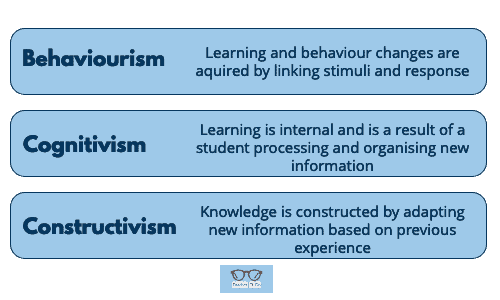Learning theories in Mathematics
If I go back in time and look at my learning days I feel Behaviourism theory was effectively used in mathematics. In maths class it was more about stimulus and response especially in junior classes for teaching topics like multiplication and times tables, algebraic formulas, there was lot of repetition, practice involved and teacher’s always used to emphasised on practice “the more you practice the better you become at maths” and that’s what I believed in. However over the course of period as i pursued maths in my post grad also in my teaching practice my belief of associating behaviourism theory in maths shifted. I felt with a subject like maths behaviourism is not enough there should be nice balance of all three theories which are Behaviourism, cognitivism and constructivism. The findings of research conducted by Institute for Mathematical Research, Universiti Putra Malaysia reveal that when positive and negative reinforcement (behaviorism), problem solving (cognitivism) and discovery learning (constructivism) were practiced by the teachers students are more successful when systematic problem solving based on Polya’s approach is incorporated into discovery learning. Consequently, there should be more emphasis on teaching methods which include less lecture, more student-directed classes and more discussion. The findings suggest that problem-solving and discovery-learning skills not only contribute to better mathematics learning but also enhance students’ creativity to cope with life challenges.
Image source- https://www.educationcorner.com/learning-theories-in-education/
From the reading suggested I have drawn out some points to make a clear difference among these three learning theories for better understanding.
1- Behaviourism
- Behaviourism is the result of a stimulus-response cycle.
- Later learning is dependent on earlier concepts being understood.
- It focuses on the role of punishments and rewards in learning.
- Drill practise is prioritised over concepts and strategies.
- learners are frequently unable to transfer their skills to different contexts.
- Teacher centric
2- Cognitivism
- Based on mental stimuli
- Student centric
- Focuses on building problem solving skill
- Enables learners to solve real life problems.
- It works in stages like understanding a problem, Devising a plan and lastly execution.
3- Constructivism
- Prior learning is essential, builds on what the learner already knows.
- learner centric approach
- Scaffolding is required to enhance the learning
- Builds confidence
- Think critically with vigilant supervision
- Focus on collaborations

As an maths educator I beleive it’s important to keep on updating ourselves and inculcating new teaching methods, strategies and activities in classroom. Math is more than just solving sums in a boring class; it builds skills that help children solve real-life problems and issues, as well as logic, as a result they emerge as more confident individuals. Numerous studies have found that students suffer from mathematics anxiety, which is characterised by a sense of tension and fear that interferes with math learning. This could be attributed to the methods of instruction used. As a result, maths teaching methods must be reconsidered in light of the these three major learning theories: behaviourism, cognitivism, and constructivism.
Thank you!